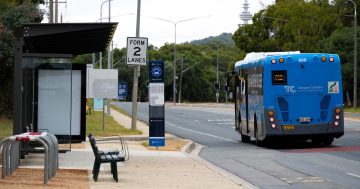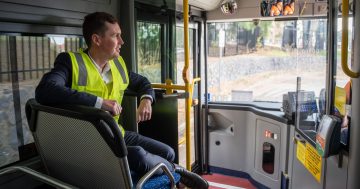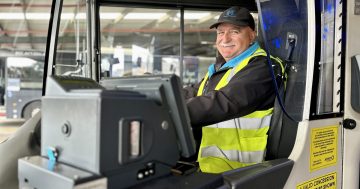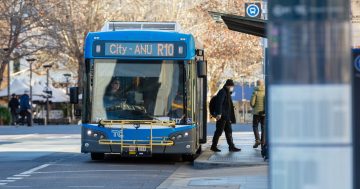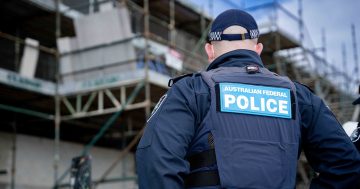
Canberra’s Uber X ride-sharing service is continuing to grow in popularity with more than 700 locals now signed up as drivers – seven times the number who started when the service was legalised in the ACT 18 months ago.
Passenger numbers are also rising with more than 80,000 Canberrans downloading the smartphone app for the cashless service which connects them with drivers who use their own cars to provide transport.
The increases have occurred despite costly new ACT Government regulations for Uber drivers and strong concerns in Melbourne and Brisbane about driver pay rates and conditions.
Uber X driver-partner Allan Shaw from Banks has been driving for an average of 40-45 hours a week since starting out in January 2016 and believes the service works well for both drivers and passengers.
“I like the fact that I have the freedom to make my own hours,” he said. “I’ve gotten to meet all sorts of interesting people and had all sorts of conversations at all hours of the day and night.
“It’s a relaxed way to earn money and you get to drive around our magnificent city – I can’t complain about that.”
Pay rates
More than 1200 Melbourne Uber drivers logged off their apps for a full day earlier this month in protest at working conditions and poor pay rates said to be as little as $11 an hour after expenses. It was the third Uber driver strike in Melbourne in three months and Brisbane Uber drivers have reportedly also taken action.
The strike was organised by Ride-Share Drivers United (RSDU) who are concerned about base rates being cut in some cities, leading some drivers to work 12-14 hour shifts to make ends meet.
A spokesman for the RSDU told The RiotACT that Canberra’s Uber base rates are about 30 percent higher than those in Melbourne and Brisbane.
“Base rates wise, the pay in Canberra is much better than Melbourne or Brisbane, but all other issues remain. Uber drivers are wrongly classified as subcontractors, and are being exploited,” he said.
Canberra’s Allan Shaw doesn’t seem overly concerned about pay rates and tends to look at his Uber income over a three to six-month period.
“There are definitely weeks when you look at the hours you’re putting in and what you’re getting out of it and you wonder. But other weeks it’s absolutely booming,” he said.
“For me, it gives me enough money to cover my running costs and household bills and have some left over. Everyone wants to get something different out of it.”
Mr Shaw believes it is difficult to determine an hourly rate as Uber drivers are sub-contractors and payments are made according to trips, not hours. However, he thought the pay would still work out at about $20-25 per hour after expenses.
A former Canberra Uber driver, who preferred not to be named, said he thought the pay worked out at about $10-11 an hour after expenses but also after tax.
The man already had a full-time job and drove part-time for Uber between June and December last year to help clear some credit card debt and pay for overseas trips.
He mainly left because he was missing spending time with his young family but also felt the low pay and new ACT rideshare service regulations were an issue – leaving before they came into effect.
However, the man still feels that the Uber X service is working well in Canberra, particularly for passengers. He said that it is much cheaper than using a taxi, provides additional transport options and is convenient to use.
“It’s all about the modern world where everyone likes to do everything by phone,” he said.
The former Uber X driver said that passengers often commented that they liked the variety of new model cars used and their cleanliness.
“Most of the passengers gave me feedback that all the cars looked very good and provide good service.” This is reinforced by the Uber five-star rating system for passengers, which he said helps to ensure that drivers have a good attitude.
Uber’s ACT General Manager, Henry Greenacre said Canberrans are attracted to driving for Uber mainly because they like working on their own schedule and being their own boss.
“Ridesharing offers an incredibly flexible way to make extra money around existing work commitments and that’s how many of our Canberra partners use the app,” he said.
Passenger demand
Mr Greenacre said that demand for rides in Canberra is strongest on Friday and Saturday nights when locals are looking for a safe ride home after enjoying a few drinks. This is also the case for other similar-sized cities.
“More recently, we’ve seen an increase in international visitors taking Uber trips following the introduction of new flights direct into Canberra, which is clearly great for drivers, riders and the city,” he said.
Mr Shaw definitely likes the flexibility of being able to work around his family’s needs. He has set himself a weekly driving schedule which includes working during the busy periods on Thursday, Friday and Saturday nights.
He often starts at 4 or 5 pm, takes a break for a couple of hours around 9-10 pm and then drives from midnight to 2-3 am. He tends to drive during the day on Tuesdays and Wednesdays and in the afternoons on Sundays, taking Mondays off.
During the day, the most popular places to pick people up tend to be the city, the airport and wherever there are government offices.
“The access we have at the airport is fantastic. There is even a lounge for people to wait,” he said.
Increased ACT regulation
When Mr Shaw started driving for Uber X in January last year it was a much more straightforward process than it has been in recent months.
“I came to do this through redundancy. I saw an ad for it on Facebook and back at that stage it was an easy process of police checks and a roadworthy certificate and then you could get on the road,” he said.
That changed on August 1 last year when the ACT Government introduced new rideshare and accreditation requirements which were effective immediately for new drivers but only came into force for existing drivers on January 31 this year.
Under the new requirements, anyone driving a rideshare vehicle needs to:
- Upgrade their driver’s licence to obtain a ‘D’ condition
- Present a passed roadworthy certificate
- Obtain rideshare compulsory third party insurance
- Obtain a rideshare driver accreditation and a rideshare vehicle licence
- Obtain a working with vulnerable people registration (this last one comes into force in November)
Mr Shaw said the new regulatory process can take as long as eight weeks to complete and cost up to $500.
He believes that some people have been turned off working as Uber X drivers by the upfront costs and also said that a number of existing drivers stopped working at the end of January rather than incur the new costs.
“It was a disincentive for some people to continue but it helped some of us established drivers to get a few more rides,” he said.
However, although there was a temporary drop in drivers at that stage, Mr Shaw said many new drivers have come on board in recent months.
He has completed 4,437 trips since starting in January 2016 and definitely intends to keep driving. That should make a lot of passengers happy given that he has obtained an average rating of 4.94 stars out of five!
Mr Shaw drives a 2009 Kia Cerato four-door sedan and says his passengers range from teenagers right through to retired people.
“Even on the weekend, I had some brand new first time Uber passengers. Some of them had been apprehensive about it but now they’ve had a pleasant experience they are more likely to keep using it.
“One of the more interesting quotes I’ve had from several passengers, both men and women, is that they have felt safer using Uber than they ever have in a taxi,” he said.
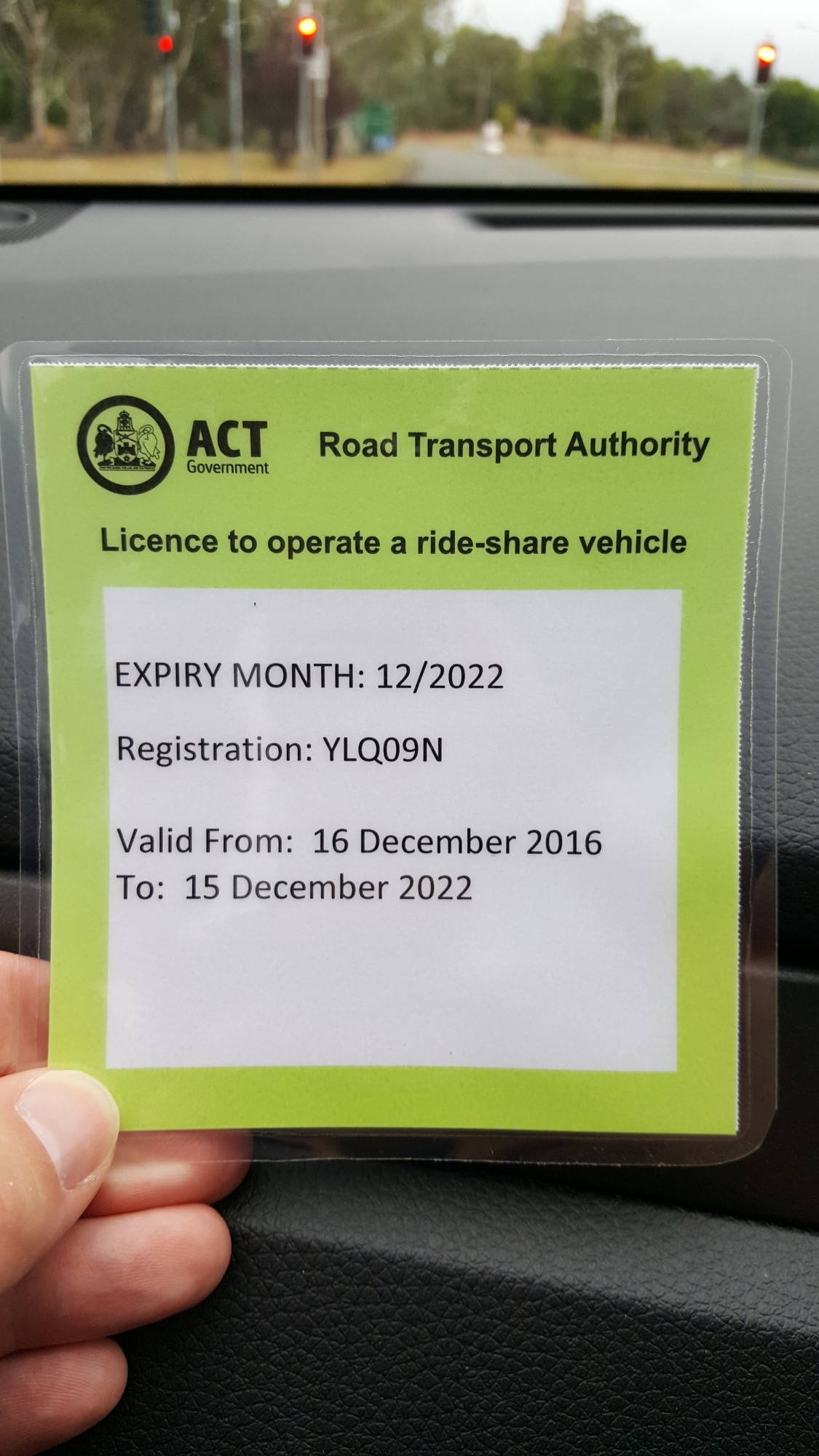
Pictured above is an example of the new rideshare vehicle licence which must be displayed in Canberra Uber X vehicles.
The top photo is of an Uber driver and passenger sourced from Uber Media Resources.
What do you think of the Uber X service? Let us know your experiences in the comments.












